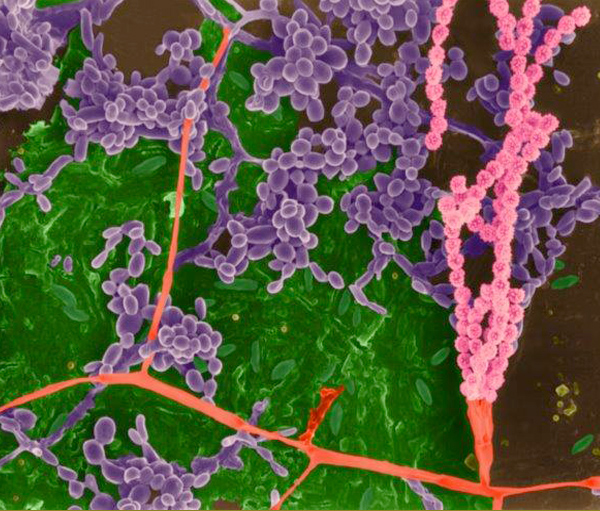
© Dennis Kunkel Microscopy
Home Resources Pathogens What is a Schistosome or a blood fluke?
What is a Schistosome or a blood fluke?

© Dennis Kunkel Microscopy
A schistosome is a parasitic trematode worm also known as a blood fluke. The larval forms of the worm live in freshwater snails.
What diseases are caused by Schistosomes?
Schistosomes cause the disease schistosomiasis also known as Bilharziasis and Snail fever. Cases of schistosomiasis begin when the body is invaded by the parasite in its infective stage, known as cercaria. Cercariae are released by the freshwater snails and swim freely in open bodies of water. The cercariae penetrate the skin of bathers in lakes and ponds where snails abound and cause a dermatitis often referred to as "swimmer's itch." The cercariae then mature into another larval form known as schistosomula.
Schistosomula are able to travel through blood and lymphatics to the lungs and liver where they mature into the adult form of the worm. The adult worm then migrates to the anatomic area of its preference, depending on which of the 5 species is involved. Likely areas include the bladder, rectum, intestines, liver, portal venous system, spleen, and lungs. Illness is not due to the presence of the adult worms in the body, but rather the number of location of the eggs that they lay. Heavy infestation may cause fever, chills, lymph node enlargement, and liver and spleen enlargement. Urinary symptoms may include frequent urination, painful urination, and blood in the urine. Intestinal symptoms include abdominal pain and diarrhea, which may be bloody.
The most significant effects are the late complications that arise from chronic infection such as liver fibrosis, bladder cancer, infertility, and colorectal malignancy. Eggs can also be deposited at ectopic sites such as brain, spinal cord, pelvis and vulvovaginal areas.
Who is more susceptible to infection from Schistosomes?
Susceptibility to schistosomes is universal. Anyone bathing, wading, or swimming in waters with infected snails may be infected.
Epidemiology of Schistosomes
In North America the cercariae do not mature inside the body often making the illness mild and self-limiting. In tropical areas of the world schistosomiasis is a more serious health issue. In fact, it is the second most prevalent tropical disease in the world behind malaria.
Incubation Period
"Swimmer's Itch" may develop within days after becoming infected. Acute systemic manifestations may occur 2-6 weeks after infection. Most people have no symptoms at the early phase of infection.
Diagnosis of Schistosomiasis
Microscopic identification of eggs in stool or urine is the most practical method for diagnosis. A blood test has also been developed and is available at CDC.
Treatment of Schistosomiasis
Safe and effective drugs are available for the treatment of schistosomiasis and only have to be taken for several days. The drug of choice is praziquantel for infections caused by all Schistosoma species.
Contact EHA Consulting Group today for more information about how we can assist your company.